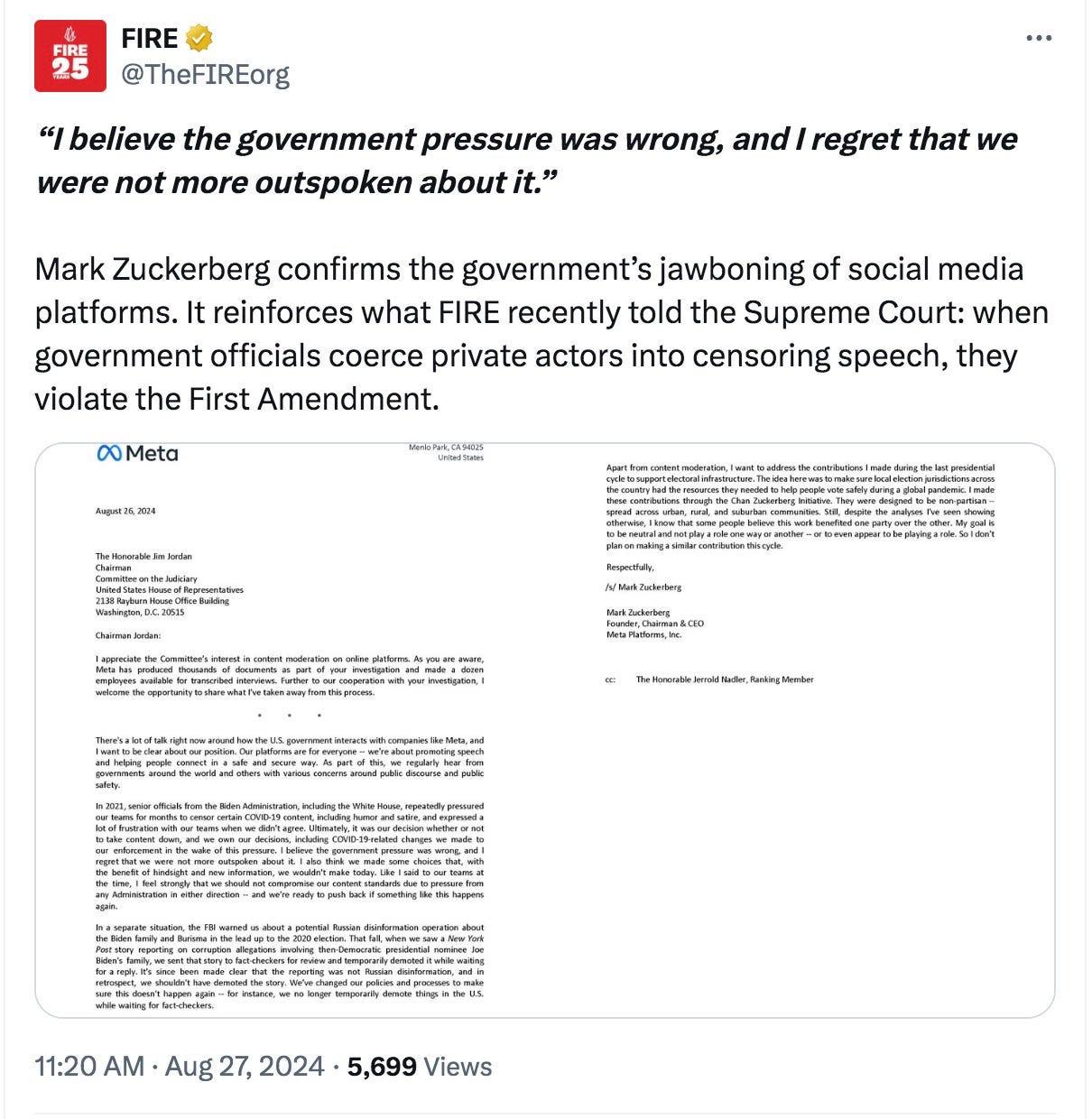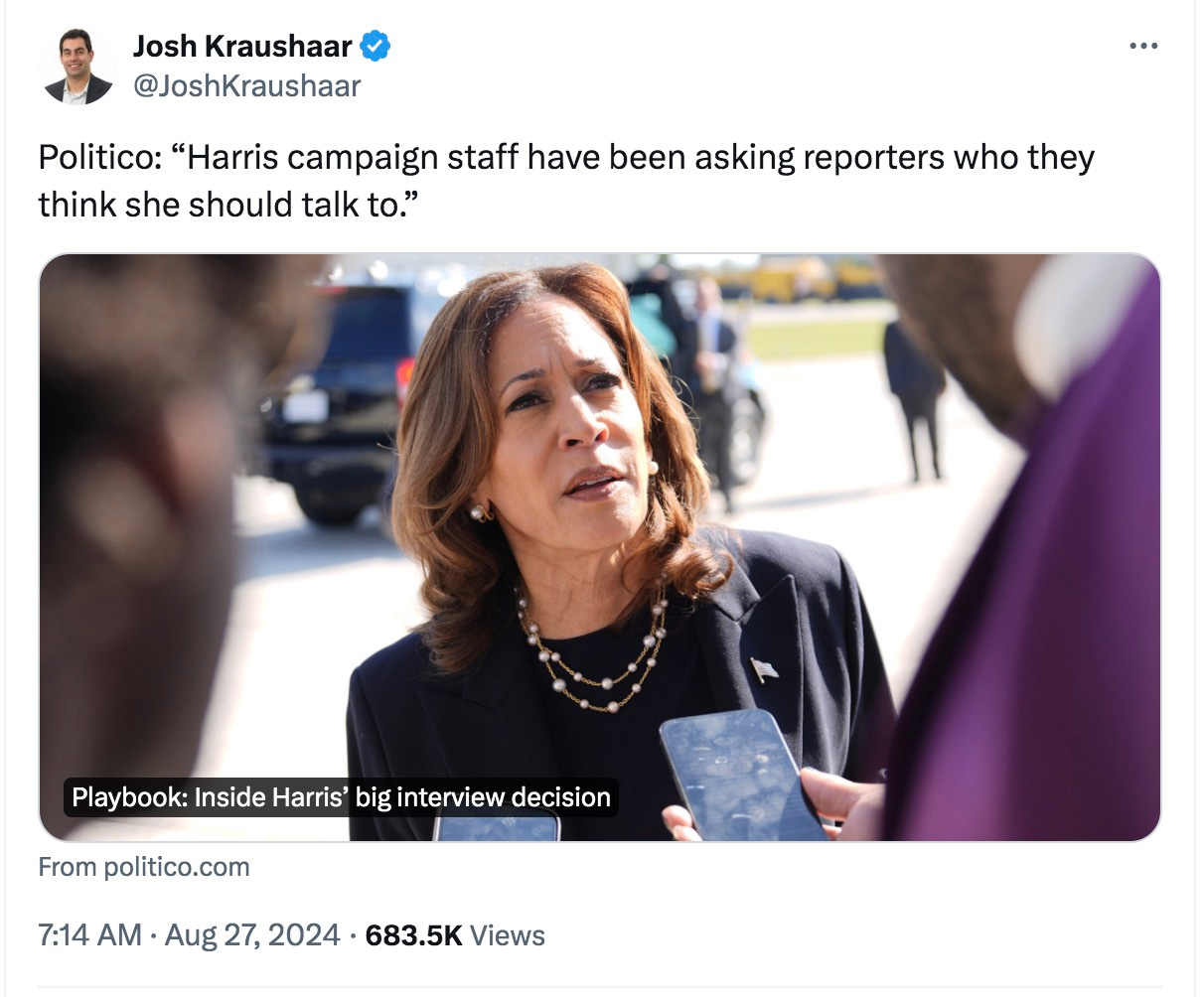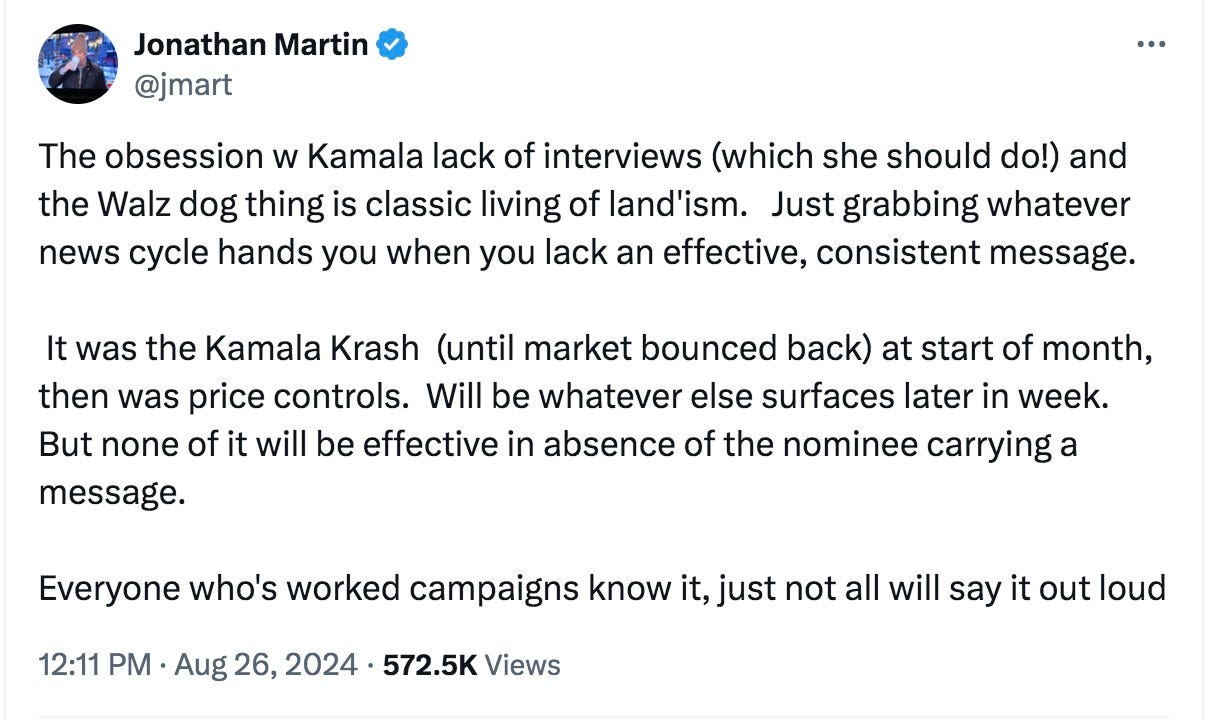E-Pluribus | August 27, 2024
Answers to your burning questions about postliberalism; restoring campus free speech is just the beginning; and preventing further decline in higher education
A round-up of the latest and best musings on the rise of illiberalism in the public discourse:
James M. Patterson: What Is Postliberalism?
While some conservatives may view postliberalism favorably, James Patterson at The Dispatch explains, as Inigo Montoya expressed to Vizzini, that the word doesn’t means what so many on the right think it means. Patterson reviews the history of postliberalism and its place in today’s political context.
Put simply, postliberalism is three things. First, it is an authoritarian ideology adapted from Catholic reactionary movements responding to the French Revolution and, later, World War I. Second, it is a loose international coalition of illiberal, right-wing parties and political actors. Third, it is a set of policy proposals for creating a welfare state for family formation, the government establishment of the Christian religion, and the movement from republican government to administrative despotism.
The third point might sound unhinged, but postiberals have come to object to liberalism. While most Americans know the term “liberalism” as a reference to a left-of-center ideology common among Democrats, the other common use is in reference to a political theory that prioritizes individual rights as a source of political authority and human flourishing. Postliberals believe this “classical liberalism” to be a disembodied secularizing (even satanic) force that uses the language of liberty of conscience, representative government, and constitutionalism to conceal the true liberal aim of denying the authority of the highest good. In their view, liberalism has presently fallen apart, and there is now no need to “conserve” classical liberalism as movement conservatives like William F. Buckley Jr. to Milton Friedman and Ronald Reagan had argued.
On the contrary, postliberals want to end liberalism and entirely replace it with what comes next—what is literally “postliberal.” Given that liberalism entails liberty of conscience, representative government, and a constitution, none of those will be part of a postliberal order. Citizens will become subjects. Personal liberty gives way to bureaucratic discretion. Market economies are replaced by an alliance of corporate and state power.
What does that mean in policy terms? If Donald Trump wins the presidency again in November, does that mean we could be one election away from a postliberal America? The answer is, for postliberals, eventually. Postliberals have adopted a long game, believing that they will not secure policy wins all at once but rather one at a time. For example, family policy might wed middle-class voters to postliberalism like tax cuts once united them to movement conservatism. Family policy could thus become the leverage for future postliberal positions, such as giving China and Russia free hands in their spheres of influence. After all, why should America spend money defending Ukraine when the nation could spend that money on rebuilding the American family? This might sound far-fetched, but one should consider that recommendations for a middle-class welfare state and opposition to Ukraine are coming from postliberals, who are repeating messages from Viktor Orbán in the process. This is not speculation but their stated position.
[. . .]
How did postliberalism move from fringe Catholic ideology to the GOP vice presidential nomination in less than a decade in the person of Sen. J.D. Vance? After all, most Americans do not want what historical postliberals have proposed. To explain requires understanding how postliberals aimed to move from developing an ideology to creating an elite movement. On the ideological front, Notre Dame legal scholar Patrick Deneen has done much to break with the old Judeo-Masonic conspiracy by attributing the problems of liberalism not to shadowy conspirators but to the inevitable consequences of adopting liberal principles in law, culture, and economics. Liberalism becomes “structural” for postliberals the same way racism is for critical race theorists—the system itself is the source of the problem.
Read the whole thing.
Wilfred M. McClay: Free Speech Is Not Enough
While concerns about censorship on college campuses are important, Wilfred McClay argues at City Journal that addressing those issues is only the beginning. The substance of education itself is fundamental. McClay says colleges should get back to teaching students instead of catering to them.
[T]he restoration of free speech, as well as the ethos that supports its flourishing, is not the full cure to what ails higher education in America. Yes, a university is a community of inquiry. But it also is something more than that: a community of shared memory, the chief instrument by which the achievements of the past are transmitted to the present as a body of knowledge upon which future knowledge can be built. Without the prior existence of that body of shared knowledge to build upon, the concept of progress is empty. This is what it means to be a civilization: a social formation in which such transmission takes place continuously and reliably, forming the basis of a rich and enduring common life.
Healthy civilizations do not reinvent the wheel in every generation. They do not require the young to invent their own trigonometry or calculus, or require them to discover the laws of physics by unguided experimentation, or to suss out for themselves what the greatest works of literature are and why they are great. Instead, they use time-honored tools of instruction—the laboratory, the seminar, the lecture—to transmit that body of knowledge so that the young can push off from what others have discovered and put that insight to use, addressing themselves to new endeavors and to the task of living full and reflective human lives.
The implications of this insight are not hard to discern: colleges and universities have failed to make fundamental choices about what matters most in a college education and to ensure that such choices are reflected in the curricula that they require students to immerse themselves in. Higher education has sought for too long to accommodate the customer rather than educate him. We see curricula rich in exotic electives but barren of the most important elements of a complete education, leaving the matter of a student’s overall educational experience to chance.
We’re seeing a significant reaction against this pattern of evasion, however. It’s visible in the growing number of programs in civic education sprouting up on the campuses of public universities, such as Arizona State, Tennessee, Florida, Ohio, and others waiting in the wings. They have the right idea. Any education worthy of the name should introduce the young to the fullness of their political and cultural inheritance as Americans, enabling them to become literate and conversant in its many features and to appropriate fully all that it has to offer them, both its privileges and its responsibilities. Such an education should usher them into membership in a rich common world and a more capacious identity as American citizens.
Read it all.
Nathanial Bork, Robert Maranta, Martha Bradley Dorsey: Preventing the Next Wave of Progressive Radicalism—Before It Arrives
Speaking of improving higher ed, a trio of scholars writing at Quillette investigate how higher education reached its sorry state and what can be done to prevent further degradation. Nathanial Bork, Robert Maranta and Martha Bradley Dorsey examine university characteristics, leadership, faculty, students and outside influences to diagnose the patient and suggest treatment.
Recent developments suggest that the influence of social-justice ideology on American university policies has finally crested, and may even be in retreat. Both Harvard University’s Faculty of Arts and Sciences and the Massachusetts Institute of Technology (MIT) recently announced that they will no longer be requiring Diversity, Equity, and Inclusion (DEI) statements from candidates seeking jobs or promotions. Harvard, along with Stanford University, has also announced a policy of neutrality on political and social controversies, a move that likely reflects the toxic spillover from the campus controversies that erupted in connection with Hamas’s 7 October 2023 terrorist attacks and the Israeli military invasion of Gaza that followed. Meanwhile, at the University of Pennsylvania, officials are mulling over strategies to recruit more moderate and conservative voices as a means to balance the otherwise (overwhelmingly) progressive slant of its faculty. While these institutions constitute just a small fraction of American universities, they act as bellwethers within higher education more broadly, as their policy shifts often influence decision-makers at less well-known schools.
But before we begin celebrating the adoption of more sensible, classically liberal policies by university administrators, it should be acknowledged that proponents of aggressive DEI requirements, speech codes, forced anti-racism training, and other illiberal policies still dominate the commanding heights of university life, especially at elite institutions. And even once dislodged, they will likely be back, in keeping with patterns that have been observed on American campuses since the 1960s.
[. . .]
[W]e should be taking steps to empirically study and predict the process of ideological capture before things get so bad that university presidents humiliate themselves in front of legislators while trying to answer basic questions about how campuses should be governed.
In furtherance of this goal, scholars and researchers at various universities, the Foundation for Individual Rights and Expression (FIRE), the Foundation Against Intolerance and Racism (FAIR), the American Council of Trustees and Alumni, and Heterodox Academy (HxA) are using quantitative methods to analyse why different universities have succeeded or failed in upholding liberal values over the last decade. This exercise focuses on independent variables relating to six categories: university characteristics, leadership, faculty, administration, students, and outside influences. The three of us, all scholars at the University of Arkansas, have taken up the task of analysing the data as it becomes available.
An analysis of FIRE’s data suggests that universities located in America’s northeast region tend to have the weakest commitment to free speech. Moreover, schools that are seen as more prestigious, and which charge students higher tuition, score particularly poorly. We suspect, as Williams College scholar Darel Paul argued in his 2018 book From Tolerance to Equality, this is because promoting DEI-oriented mantras has become a positive class marker among elites, a key part of the “classification struggle” by which they distinguish themselves as high-status individuals.
Private institutions, likewise, tend to score more poorly than their public counterparts. Only two of the top-scoring (which is to say, least illiberal) twenty universities in our analysis are private, compared to thirteen universities in the bottom twenty. This may well be related to the fact that private institutions generally have more autonomy to determine their policies without interference from elected policymakers, and are less likely to be constrained by the First Amendment considerations that affect public institutions.
It’s hard to say if these trends reflect the fact that young progressive students seek to inhabit homogeneous ultra-elite ideological silos governed by similarly minded administrators; or if it is a case of institutions inflicting illiberal policies on students who may be (at least somewhat) open-minded about accepting ideological diversity. Hopefully, further study will cast light on this question.
Read it all here.
Around Twitter (X)
Mark Zuckerberg is having some public regrets about allowing the government to influence Meta’s censorship decisions:
Via Politico, the Harris campaign is apparently asking the media to recommend journalists to interview the vice president:
Finally, and oddly, Politico’s Jonathan Martin thinks Harris’s interview phobia isn’t that big of a deal:










